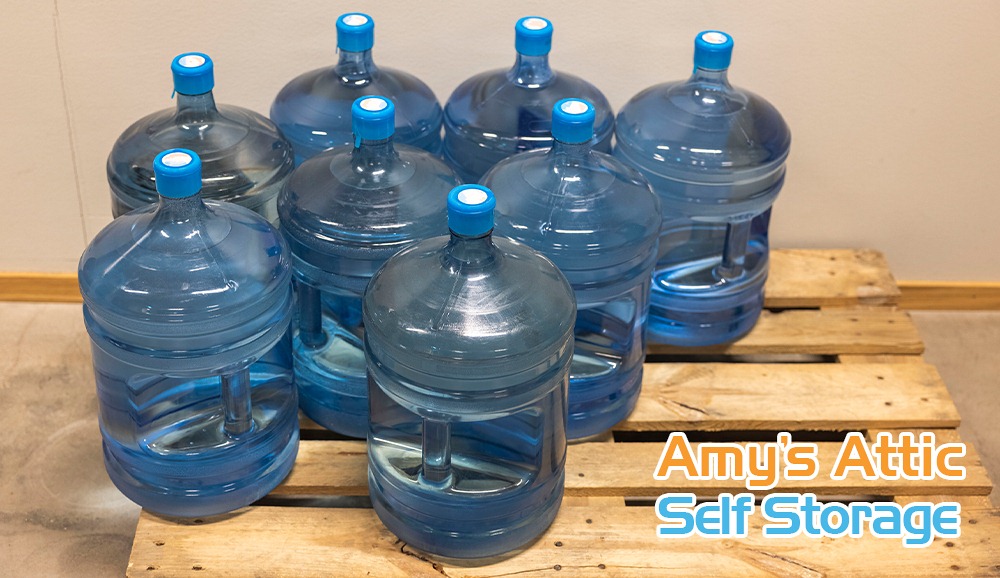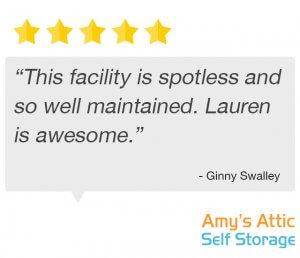As a resident of Texas, preparing for any type of emergency is not just smart—it’s essential. Our state’s weather patterns can shift from drought to flooding, from record-breaking heat to severe winter freezes, sometimes within the same season. Among the most critical supplies for any household or business to prepare is water. Yet, few people know how to store water long term or where to keep it safely.
Whether you’re planning for natural disasters, infrastructure issues, or unexpected power outages, understanding how to store water in a storage unit can make all the difference. In this guide, we’ll walk through everything you need to know—from container choices to climate-controlled options—to keep your emergency water supply safe, clean, and ready for use.
Why Should You Consider Storing Water in Your Texas Storage Unit?
Texas is known for its extremes. In Central Texas especially, severe droughts and boil-water notices have become increasingly common in recent years. When city water systems are compromised or contaminated, bottled water quickly disappears from store shelves. That’s why having a separate, off-site water reserve is so valuable.
A storage unit offers a secure, temperature-stable environment where you can keep extra drinking water, away from household clutter or risk of contamination. By choosing a facility with climate-controlled storage, you can safely store water in a storage unit for long periods without worrying about heat, freezing, or evaporation.
While it’s wise to maintain water at home, storing additional gallons in your unit adds another layer of security. A few sealed containers of water could mean comfort and safety during a severe storm, power outage, or extended boil-water advisory.
If you live near Belton, Temple, Moffat, Salado, Harker Heights, or Waco access to a local Amy’s Attic Self Storage facility makes it easy to add emergency water storage to your preparedness plan.
How to Store Water for Long-Term Storage
Learning how to store water long term takes only a few basic steps, but those steps are critical to ensuring safety and freshness. Here’s what you should do before moving your supply into a storage unit.
| Step | What to Do | Why It Matters |
|---|---|---|
| 1. Start with clean, potable water | Use bottled or properly filtered tap water | Reduces risk of bacteria or chemical contamination |
| 2. Use food-grade, BPA-free containers | Look for HDPE or PETE-marked plastics (#1 or #2) | Prevents leaching and keeps water safe for consumption |
| 3. Label and date containers | Mark each bottle “Drinking Water” + fill date | Helps track rotation and ensures freshness |
| 4. Store at 50°F–70°F | Choose a climate-controlled storage unit | Prevents algae growth, freezing, and plastic degradation |
| 5. Keep off the ground and away from sunlight | Use wooden pallets or shelving | Maintains temperature balance and prevents moisture damage |
| 6. Inspect twice per year | Check for leaks or discoloration | Keeps your water reserve in reliable condition |
Before placing any water in storage, confirm with your facility that non-hazardous liquids are permitted. All Amy’s Attic Self Storage locations welcome water storage for emergency use when properly sealed and labeled.
Choosing the Right Container for Long-Term Water Storage
Selecting the right container is key to keeping your water clean and drinkable. When you store water in a storage unit, look for containers that meet food-grade standards and are free of BPA or other harmful chemicals.
Recommended containers:
- HDPE plastic barrels (15–55 gallons) – Durable, UV-resistant, and made for water storage
- 5–7 gallon jugs – Easy to handle for rotating or emergency use
- Glass bottles – Suitable for short-term storage if tightly sealed and kept cool
- Factory-sealed bottled water – Ideal for quick rotation and small families
Avoid reusing containers from milk, juice, or cleaning products — these can harbor bacteria or chemical residue. Always sanitize any container before use with a mild bleach solution (1 teaspoon of unscented bleach per quart of water).
According to the Centers for Disease Control and Prevention (CDC, 2024), properly sanitized containers filled with clean drinking water can last up to six months when stored under cool, dark, and sanitary conditions.
The Importance of Climate-Controlled Storage Units
Temperature extremes can quickly ruin a good water supply. To store water in a storage unit long term, choose a climate-controlled unit that maintains temperatures between 50°F and 70°F.
In Texas, where summer highs can exceed 100°F and winter nights can freeze pipes, these stable conditions prevent:
- Plastic containers from warping or leaking
- Algae or bacterial growth
- Evaporation or condensation
- Freezing and bursting during cold snaps
Amy’s Attic Self Storage provides climate-controlled options across Central Texas that are ideal for storing bottled water, first-aid supplies, and other emergency items.
If you live near Belton, Temple, Moffat, Salado, Harker Heights, or Waco storing water in one of these units ensures long-lasting quality and safety for your emergency supply.
How Long Can Water Be Stored Before It Goes Bad?
Even sealed water doesn’t last forever. While factory-bottled water can last up to two years if unopened, self-bottled water typically remains drinkable for about six months. After that, it’s best to refresh or rotate your supply.
To calculate how much to store water in a storage unit, plan for:
- One gallon per person per day for drinking, cooking, and hygiene
- At least three days’ supply (recommended minimum)
- Two weeks’ supply for complete preparedness
In Texas’ hot summers, increase this to 1.5–2 gallons per person per day. Don’t forget to include pets or individuals with higher hydration needs.
Check containers every few months for:
- Cloudy water or sediment
- Odors
- Leaks or bulging plastic
When in doubt, replace it — clean water is always worth the effort.
How Long Can You Store Water Before It Goes Bad?
Most experts suggest rotating your water supply every six months.
Although sealed bottled water can last up to two years, stored tap water has a shorter shelf life. After six months, inspect each container for leaks, odor, or cloudiness.
A good rule is to keep at least one gallon per person per day for three days — enough for drinking, cooking, and hygiene — but a two-week supply is ideal.
When calculating how much to store water in a storage unit, consider:
- Family size and pets
- Medical or dietary needs
- Seasonal temperatures (hot summers may increase usage)
Mark your containers clearly with refill dates to stay on schedule.
Emergency Planning: How Water Storage Fits Into Your Preparedness Kit
Water is just one part of a complete emergency kit, but it’s often the most vital. Alongside your stored water, your preparedness plan should include:
- A first-aid kit
- Non-perishable food (3–14 days’ supply)
- Flashlights and batteries
- Portable water filter or purification tablets
- Personal hygiene supplies
- Important documents (in waterproof bags)
When you store water in a storage unit, you can also keep these supplies nearby for quick access after a flood, power outage, or evacuation. Amy’s Attic offers a variety of unit sizes for both families and businesses looking to create complete emergency supply stations.
Water Purification and Rotation Tips
Even if your water looks clean, rotating and sanitizing regularly is essential. Here’s how to keep it safe when you store water long term:
1. Sanitize Containers Before Refilling
Rinse containers with unscented bleach (1 teaspoon per quart of water), then rinse again with clean water before refilling.
2. Label Clearly
Write the storage date and “Drinking Water” on each container. Replace every six months, even if unused.
3. Rotate Bottled Water
Use the oldest water first and replace with new bottles during your routine inspections.
4. Purify in Emergencies
If you’re unsure about your water’s safety, boil it for at least one minute, or use purification tablets according to instructions.
The Federal Emergency Management Agency (FEMA, 2024) recommends rotating stored water every six months and maintaining a backup purification method in your emergency kit.
Common Mistakes to Avoid When Storing Water
When storing water for long-term use, these common errors can shorten the lifespan of your supply or make it unsafe to drink:
- Using non-food-grade containers that may leach chemicals into the water
- Leaving containers in sunlight, which encourages algae growth
- Ignoring expiration dates on factory-bottled water
- Forgetting to check unit temperature regularly
- Storing near chemicals or gasoline, which can cause vapors or leaks to taint the water
Avoiding these mistakes ensures that your emergency water stays clean and safe when you need it most.
Local Water Provider Spotlight: Hill Country Springs
When you’re ready to stock up, choosing a reliable source of high-quality water is crucial. We recommend Hill Country Springs, Central Texas’ largest independent water company. They offer purified bottled water and commercial delivery, making it easy to replenish your supply without heavy lifting or guesswork.
Their locally sourced, filtered water meets stringent safety standards, making it ideal for families and businesses storing emergency supplies.
Preparing for Emergencies with Amy’s Attic Self Storage
Now that you know how to store water long term, it’s time to put your plan into action. Amy’s Attic Self Storage offers secure, clean, and climate-controlled units across Central Texas — perfect for emergency supplies, bottled water, or household storage.
Our team will help you choose the right unit size and environment for your needs, whether you’re a homeowner safeguarding your family or a business protecting its operations.
About Amy’s Attic Self Storage
Amy’s Attic Self Storage proudly serves Central Texas communities including Belton, Temple, Waco, Harker Heights, and Salado. Our facilities feature state-of-the-art security, drive-up access, and climate-controlled units designed to protect your valuables and emergency supplies.
If you’re ready to store water in a storage unit or create an emergency plan, visit https://www.amysatticss.com to find your nearest location.







